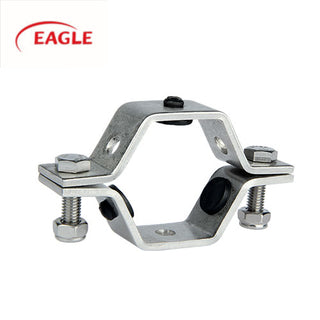
# Sanitary Pipe Hangers: Essential Components for Hygienic Plumbing Systems
When it comes to maintaining a clean and efficient plumbing system, sanitary pipe hangers play a crucial role. These components are designed to support and secure pipes in a way that ensures hygiene, durability, and optimal performance. In this article, we will explore the importance of sanitary pipe hangers, their types, and how they contribute to the overall functionality of plumbing systems.
## What Are Sanitary Pipe Hangers?
Sanitary pipe hangers are specialized supports used to hold and stabilize pipes in various plumbing systems. Unlike standard pipe hangers, sanitary pipe hangers are designed with hygiene in mind, making them ideal for environments where cleanliness is paramount, such as in food processing plants, pharmaceutical facilities, and hospitals.
### Key Features of Sanitary Pipe Hangers
– **Hygienic Design**: Sanitary pipe hangers are made from materials that resist corrosion and are easy to clean, ensuring that they do not harbor bacteria or contaminants.
– **Durability**: These hangers are built to withstand harsh environments, including exposure to chemicals, high temperatures, and moisture.
– **Adjustability**: Many sanitary pipe hangers are adjustable, allowing for precise alignment and support of pipes, which is essential for maintaining system integrity.
– **Compliance**: They often meet industry standards and regulations, ensuring that they are suitable for use in highly regulated environments.
## Types of Sanitary Pipe Hangers
There are several types of sanitary pipe hangers available, each designed for specific applications and pipe sizes. Some of the most common types include:
### 1. **Strap Hangers**
Strap hangers are simple yet effective supports that use a strap to secure the pipe. They are typically made from stainless steel or other corrosion-resistant materials and are easy to install and adjust.
### 2. **Clevis Hangers**
Clevis hangers consist of a U-shaped bracket that holds the pipe in place. They are often used in conjunction with a rod or beam to provide additional support. Clevis hangers are known for their strength and reliability.
### 3. **Riser Clamps**
Riser clamps are designed to support vertical pipes, such as those found in riser systems. They provide a secure grip and prevent the pipe from moving or vibrating, which can lead to wear and tear over time.
### 4. **Pipe Rolls**
Pipe rolls are used to support horizontal pipes and allow for slight movement, which can be beneficial in systems where thermal expansion is a concern. They are often used in long pipe runs to reduce stress on the pipes.
## Benefits of Using Sanitary Pipe Hangers
Using sanitary pipe hangers in your plumbing system offers several advantages:
– **Improved Hygiene**: The hygienic design of these hangers helps prevent the buildup of bacteria and contaminants, which is crucial in sensitive environments.
– **Enhanced Durability**: Sanitary pipe hangers are built to last, reducing the need for frequent replacements and maintenance.
– **Optimal Performance**: Properly supported pipes are less likely to sag, vibrate, or become misaligned, ensuring that your plumbing system operates efficiently.
– **Compliance with Regulations**: Using sanitary pipe hangers that meet industry standards can help you stay compliant with health and safety regulations.
## Conclusion
Sanitary pipe hangers are essential components for maintaining hygienic and efficient plumbing systems. Their hygienic design, durability, and adjustability make them ideal for use in environments where cleanliness and reliability are critical. By choosing the right type of sanitary pipe hanger for your application, you can ensure that your plumbing system remains in top condition, providing safe and reliable performance for years to come.
Keyword: sanitary pipe hangers